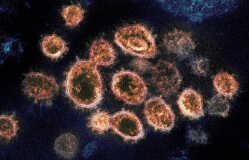PBRMC: COVID cases have escalated quickly

While the number of COVID-19 patients in the Southeast Missouri region continues to climb, so do the numbers of patients who seek treatment at Poplar Bluff Regional Medical Center.
The hospital, a regional health care provider, presently has 17 patients with COVID.
The Butler County Health Department announced five new COVID cases in Butler County on Monday, bringing the total cases to 1,450 since testing began.
Dawn M. Marshall, the medical center director of marketing and community relations, shared with the community information about how the medical facility is dealing with the pandemic.
“As you are aware, the number and severity of COVID-19 cases in our area has escalated very quickly,” Marshall said. “Our hospital’s ICU is presently at full capacity, but we continue to accept patients requiring general admission.”
Marshall said, “We are extremely proud of the many ways in which our staff and physicians have risen to this challenge. Our mission has been and will continue to provide safe and quality care to our community.”
“As we all work through this time, it is important for everyone to practice the guidelines suggested by the CDC,” she said. “Practice social distancing, wear a face mask, perform thorough and frequent hand washing.”
The Butler County Health Department is offering free Coronavirus testing from 8 a.m. - 3:30 p.m. Wednesday for Missouri residents.
Mass drive-thru testing will take place at the health department. No appointment is necessary. This testing will be done via nasal swab and sent to an off-site lab. Individuals will receive with their results once they are received.
Rapid testing is by appointment only and limited spots are available. To schedule a rapid test, click the “Book Now” icon on the county health center’s website or call the county health center at 573-785-8478.
The National Guard will be doing COVID testing from 9 a.m. - 5 p.m. Friday at Whiteley Park.
Centers for Disease Control and Prevention, a national public health institute, has provided the information about symptoms and precautions to take.
• Symptoms may appear two to 14 days after exposure to the virus. People with these symptoms may have COVID-19:
• Symptoms are fever or chills, cough, shortness of breath or difficulty breathing, fatigue, muscle or body aches, headache, new loss of taste or smell, sore throat, congestion or runny nose, nausea or vomiting and diarrhea.
• Look for emergency warning signs for COVID-19.
If someone is showing any of these signs, seek emergency medical care immediately: trouble breathing, persistent pain or pressure in the chest, new confusion, inability to wake or stay awake and bluish lips or face.
• The best way to prevent illness is to avoid being exposed.
The virus is thought to spread mainly from person-to-person, between people who are in close contact with one another (within about six feet), through respiratory droplets produced when an infected person coughs, sneezes or talks. These droplets can land in the mouths or noses of people who are nearby or possibly be inhaled into the lungs.
Some recent studies have suggested COVID-19 may be spread by people who are not showing symptoms.
Wash your hands often with soap and water for at least 20 seconds, especially after you have been in a public place or after blowing your nose, coughing or sneezing.
It’s especially important to wash before eating or preparing food, before touching your face, after using the restroom, after leaving a public place, after blowing your nose, coughing or sneezing, after handling your mask, after changing a diaper, after caring for someone sick and after touching animals or pets.
If soap and water are not readily available, use a hand sanitizer that contains at least 60% alcohol. Cover all surfaces of your hands and rub them together until they feel dry.
Avoid touching your eyes, nose, and mouth with unwashed hands.
Avoid close contact with people who are sick. If possible, maintain six feet between the person who is sick and other household members.
Outside your home: Put six feet of distance between yourself and people who don’t live in your household.
Remember, some people without symptoms may be able to spread the virus.
Stay at least six feet (about two arms’ length) from other people. Keeping distance from others is especially important for people who are at higher risk of getting very sick.
